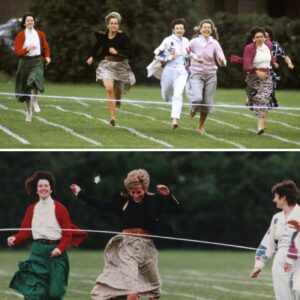How does first-time major champion Jannik Sinner change the top of the men’s game? Is there room for an American breakthrough?
It’s Getting Crowded Up There
“It’s good to be the king,” go the words from Mel Brooks’ 1981 film, History of the World. True as that is for Novak Djokovic, recent events have shown that others are rapidly encroaching on his throne. Back in July, Carlos Alcaraz wrestled away Djokovic’s four-year hold on the Wimbledon crown to earn his second major.
Most recently, at the Australian Open, Jannik Sinner loudly continued his progress up the ranks with an impressive semifinal win over Djokovic. The volume turned up even more when Sinner rallied from two sets to love down to beat Daniil Medvedev in the final and claim his first Grand Slam singles title. “So yes, I like to dance in the pressure storm,” said Sinner following the match. “I don’t know how to tell. Like me personally, I like it, because that’s where most of the time I bring out my best tennis. I’m also quite relaxed in this occasion, because I always try to enjoy on the court.” Those are the comments of a man in full, keenly primed for more.
Medvedev is right in the thick of things too. Recall how in ’21, he ended Djokovic’s hopes for a calendar Grand Slam by beating him in the US Open final. And after falling out of the top ten a year ago, he’s now reached two consecutive Grand Slam singles finals. Two years ago, also after losing a two sets to love lead in the Australian Open final, he was anguished. This time, Medvedev was upbeat. “It’s me myself right now, a 27-year-old who is dreaming,” he said, “and who’s doing everything that is possible for my future and for my present. I love it.”
“I think we have some really good personalities in the game at the moment,” said Sinner’s coach, Darren Cahill, “and it’s important they keep winning. It’s important they do what Jannik was able to do today, and that’s to show a side of this young generation that are going to fight till the very end. They really want to make a name for themselves, and Jannik did that.”
For so long, Djokovic’s status as the master of Melbourne gave him a first-mover advantage as the year got underway. That’s now off the table. Equally notable: Since Djokovic’s first title run there in 2008, only such elders as Stan Wawrinka, Roger Federer, and Rafael Nadal have rained on his reign. But now, champions considerably younger have arrived, each clearly with enough skills and results to topple the king and challenge one other all year long. And so for Djokovic, as much as he savors his personal race with history, week after week he’ll also be battling against both time and youth.
View this post on Instagram
The Fate of Americans
Last year Down Under, three American men—Ben Shelton, Sebastian Korda, Tommy Paul—reached the quarterfinals. This year, only Taylor Fritz got that far. But there is no question that this quartet and other top 100 Americans such as Frances Tiafoe, Chris Eubanks, J.J. Wolf, Mackenzie McDonald, and Alex Michelsen have many assets that can take them deep at majors. One notable asset is that these men all have very different playing styles. So how will they fare as ’24 unfolds? For Fritz, Eubanks, and Korda, might competing in Davis Cup next week further sharpen their ability to compete effectively under pressure? As the year moves forward, will events such as February’s tournament in Delray Beach and the March “Sunshine Double,” all played in the U.S. on familiar hardcourts, provide a great springboard for more success in advance of the demanding European clay court season?
Rafael Nadal: Minute by Minute
As 2024 got underway, Rafael Nadal’s return to competition after playing just four matches in ‘23 was one of the year’s most eagerly anticipated story lines. Two victories at the ATP stop in Brisbane only further increased hopes that there would be yet more chances to witness the 22-time Grand Slam champion. Then came a defeat, followed by a bigger loss: Nadal had pulled out of the Australian Open. How bad was his injury? Might he not return until April and the start of his beloved clay court season? Guess again. Nadal is entered in Doha, an event that starts on February 19. From there, Indian Wells? Miami? Who knows? Best at this stage to ponder Nadal the way he competes: one rough-and-tumble point at a time.
View this post on Instagram
PTPA: Tipping Point Coming?
Often it’s the case that for a labor movement to vault into significance, it must demonstrate extensive member activism and garner public support around a defining issue that is both concrete and worthy of a passionate crusade. For the WTA, it was and continues to be equality, demonstrated most by its ongoing pursuit of equal prize money. For the ATP, the topic was freedom, personified magnificently when its members boycotted Wimbledon in 1973.
Perhaps the fledgling Professional Tennis Players Association (PTPA) will accelerate its growth by campaigning for better working conditions; specifically, matters related to scheduling and tennis balls. Late starts, early morning finishes, and complicated recovery strategies were once again part of the Australian Open. One of the more notable ones Down Under this year was played by Medvedev, a four-hour, 23-minute long epic versus Emil Ruusuvuori that finished at 3:40 a.m.
Speaking about those wacky hours, Medvedev’s good friend, Karen Khachanov, said, “There should be certain limits because especially the best-of-five, you know that match can go up to five hours and then you start at 11:00 pm. This is not normal, not healthy for anybody to recover, to get ready for the next day, the next match. You lose a complete night of sleep. Sleeping is part of the recovery, one of the biggest parts. The food, everything we do, treatments, ice baths. All this stuff and you don’t sleep. So how are you going to feel the next day?”
“Late-night matches don’t only harm players,” said Ahmad Nassar, the executive director of the Professional Tennis Player Association. “They have negative consequences for fans, ball kids, event employees, and all stakeholders involved.”
How will scheduling continue to surface throughout 2024? Ditto for tennis balls, a topic that seems to surface in the first two to three days of every significant tournament, but of late has increased in volume and concern.





